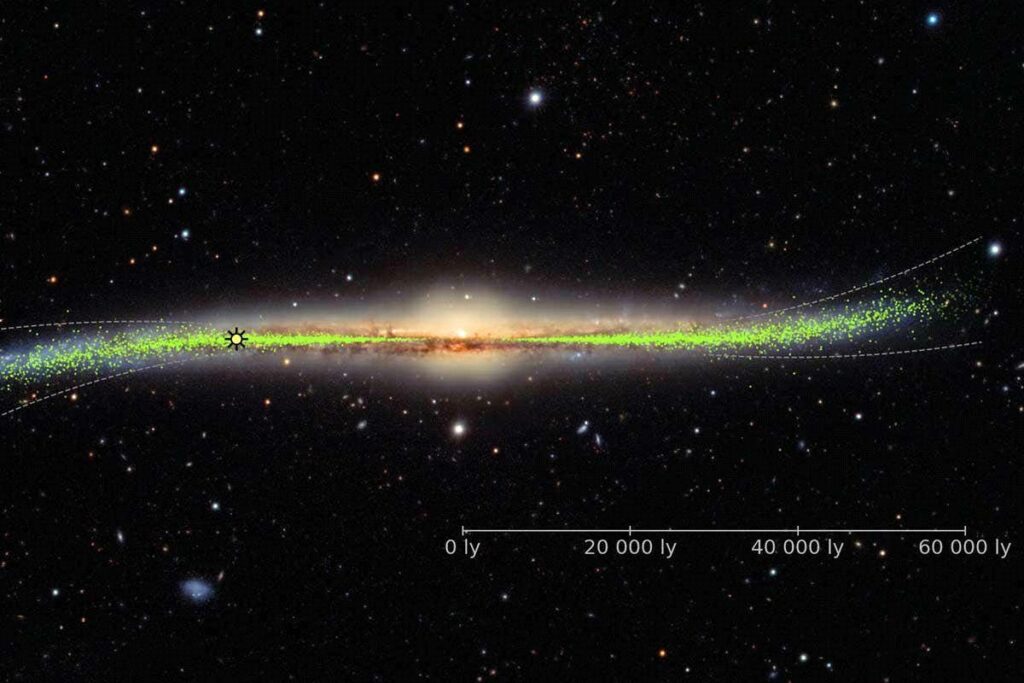Researchers at the University of Warsaw in Poland measured the distance between Sun and thousands of individual bright pulsating stars know as cepheids-massive young stellar bodies, to chart galaxy on a larger scale. Scientists used cepheids as cosmic yardsticks due to their periodic variation in brightness. By determining the 3D coordinates of each star relative to Sun, scientists created a 3D map of the Milky Way. The map was published in the journal Science on Thursday.

K. Ulaczyk / J. Skowron / OGLE / Astronomical Observatory, University of Warsaw.
According to the newly created 3D map of the galaxy, the disc is not flat instead of the edges of the Milky way bend slightly, giving the warped stellar disc of the Milky way an S like structure. Warping of the disc has been detected before but scientists for the first time used individual objects to trace its shape in three dimensions.
“Our map shows the Milky Way disk is not flat. It is warped and twisted,” co-author of the paper Przemek Mroz said in a statement. “This is the first time we can use individual objects to show this in three dimensions.”

Photo Credit: J. Skowron / OGLE / Astronomical Observatory, University of Warsaw.
Scientists believe that the warping of the Milky way is mainly caused by torques or rotational forcing by the inner disc or past interactions with smaller galaxies within the Milky way or as a result of intergalactic gas and dark matter.

Sabeeka Zafar is a Bioinformatician-to-be with a passion to be a significant part of the great revolution in the near future in the field of Bioinformatics specifically and that of Science generally. Sabeeka is a social activist, enjoys working with people for the betterment of the society and loves to read and to write.

